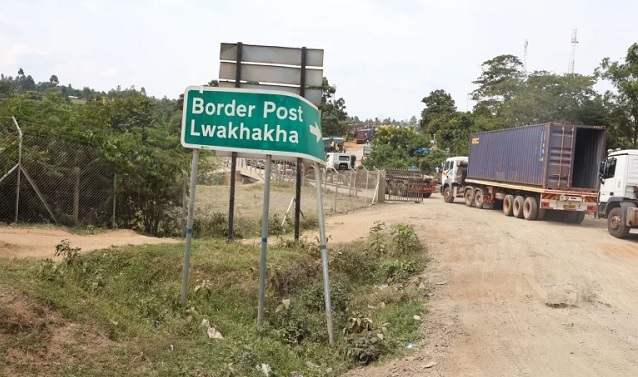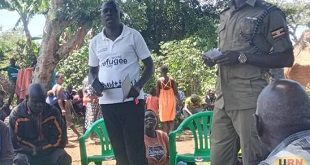
Busia, Uganda | THE INDEPENDENT | The East African Community (EAC) together with the governments of Kenya and Uganda are in the process of upgrading the Lwakhakha border post on the common border between the two Partner States into a One-Stop Border Post (OSBP) as part of efforts to reduce congestion at the Busia and Malaba OSBPs.
The transformation of the Lwakhakha border into an OSBP seeks to streamline customs procedures, reduce clearance times for goods and vehicles, and enhance collaboration between border agencies from both Kenya and Uganda.
The upgrade is expected to reduce the traffic from Malaba and Busia OSBPs boost trade along the Northern Corridor and improve cross-border security. The OSBP at Lwakhakha will also enable the two countries to create a more conducive environment for trade and commerce, ultimately benefiting businesses and communities on both sides of the border.
Speaking during a site visit to review the status of the ongoing Feasibility Study of the Multinational Kisumu-Kisian-Busia/Kakira-Malaba-Busitema-Busia Expressway, Eng. Godfrey A. Enzama, the Principal Civil Engineer at the EAC Secretariat, said that upgrading the Lwakhakha border post into an OSBP is part of the 256km feasibility study of project funded by the African Development Bank (AfDB).
“This collaborative effort underscores the shared vision of promoting trade facilitation, border security, and regional integration in East Africa,” said Eng Enzama on Friday.
He added that elevating Lwakhakha to an OSBP and diverting some of the trucks to Lwakhakha will solve numerous issues such as congestion at both Busia and Malaba in addition to creating a shorter and alternative route along the Northern Corridor.
“Geographically, Lwakhakha is a shorter route to Kenya compared to Busia and Malaba in terms of mileage,” said Eng. Enzama. He further explained that promoting the Lwakhakha to OSBP, will enhance value addition and promotion of high-value exports to the regional markets; and increase employment among the border community youth, amongst other stakeholders.
The feasibility study sets to upgrade the existing 25Km Lwakhakha – Kimaeti road starts at Kimaeti on the Webuye – Malaba (Kenyan side) and the 45km Mbale (Bumbobi) – Lwakhakha Road (Uganda side) at least to a two-lane, two-way single carriageway status.
It will have wide shoulders, to enhance capacity and to accommodate current and anticipated future local and cross-border traffic volumes along the corridor.
The road is expected to deepen regional integration and cross border trade between Kenya and Uganda, and will offer an alternative route apart from the Busia and Malaba border crossings.
The road is also projected to open doors to tourism. The feasibility studies for the 256 km multinational Kisumu-Kisian-Busia/Kakira-Malaba-Busitema-Busia expressway is currently underway under the consultancy GOPA Infra Gmbh of Germany together with ITEC Limited of Kenya.
The expressway that will run from Kisumu in Kenya to Kakira Town, in Uganda will involve rehabilitation of the existing two-lane single carriageway to bitumen standards and the upgrading of the same into a two-lane dual carriageway over a 104 kilometer stretch.
The 1.4 million dollar feasibility study project funded by the African Development Bank (AfDB) will determine the economic viability of upgrading the existing multinational road sections from single carriageway to expressway standards.
*****
URN
 The Independent Uganda: You get the Truth we Pay the Price
The Independent Uganda: You get the Truth we Pay the Price



